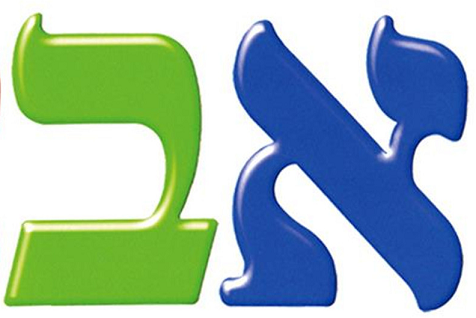Last Updated 8.26.24
Welcome to the Song of Songs Project
We are living in a generation of rapid change, division (amidst attempts at unity), and many levels of uncertainty. That’s the ‘obvious’ part that the news stories report to us. Some people understand this as “all part of G-d’s plan.” That being the case, when there are unique situations, unique spiritual opportunities become available.
Some view our present world as an ‘erev’ — a ‘mixed’ time between two separate ‘realities’ where we begin to experience a ‘taste’ of what is soon to come. Through deeper levels of study and meditation, we can learn about and access the ‘spiritual windows’ that G-d is opening at this time. This has direct implication upon Shir Hashirim specifically, as we will discuss.
Why Shir Hashirim (Song of Songs)?
Every book of the Scriptures is important and relevant. There is one however, that is considered very ‘peculiar,’ and that is Shir Hashirim. There are no commandments in it. No history. No identifiable characters. No clear ‘lesson.’
So why is this in the Tanakh?
A reason Shir Hashirim has always been considered a ‘mystery,’ is that it is a text meant for the generation of messiah to ‘unlock.’
“Thus it is written, “The Song of Songs of Solomon,” for this song is superior to all other songs of Solomon. Within it is a secret concealed and sealed from the days of Abraham until the coming of the Messiah.”
Abraham ibn Ezra (Pritzker Edition Zohar, Vol. 11)
This directly relates to another, more familiar text.
And you, Daniel, close up the words and seal the book until the time of the end; many will run to and fro, and the knowledge will increase.
Daniel 12:4
The phrase ‘to and fro,” relates to spiritual elevation and return. ‘Elevating’ for the purpose of bringing the inner meaning of things (such as the text of Shir Hashirim) from the heavenly realm, “down to earth.”
It would seem that Daniel 12:4 presents a (‘sealed’) lock, and Shir Hashirim is the key.
How will this text become understood? It will come about through three things:
- G-d’s influence and “precise timing”
- People working together on this – the collective aspect of our souls and minds
- The availability of information (internet/social media, translation of ancient texts into English, etc.)
Critical to understand, is that the first and second points above are ‘one.’ This involves the “elevation of the souls” of many to a higher level — that of collective soul unity — called Chayah. This will be discussed through our ‘commentary,’ and relates to the Meditation part of our Project.
A ‘nickname’ given to the Shekinah (divine presence), which is central to the text, is סוד האפשר, Sod ha-Efshar, meaning “the Secret of the Possible.” This hints to what we may find.
As this is ‘sealed’ until the generation of the messiah, it directly relates to the “final redemption.” While the first redemption from Egypt concerned only Israel, the last is for Israel, and also all of humanity and creation. This being the case, it will be up to both Jew and gentile to study and ‘reveal’ Shir Hashirim.
The great sage, Rabbi Akiva, said that while all the books of Torah are holy, Shir Hashirim is the “Holy of Holies.” Together, we will learn why.
What Makes this Song of Songs Project Unique?
This project is not a typical “Bible study.” It is a collective, interactive effort, availing itself of all the minds, texts, and technology that we have at this auspicious time. There’s more to this project than just study of the text.
Here are SIX things we are planning:
- Creating an original “collective commentary” on Shir Hashirim. This will be a combination of people researching topics & themes and adding notes, citations & links to the commentary. (Finding the “best stuff out there.”) It will also involve providing personal insights & ideas to the themes of the text. (“New Torah”) All you need is a computer and internet. We will offer ideas to get you started. (Chapter 1 notes are starting to roll out. See links at bottom.)
- Forming meditations specific to themes from the text and related materials. (See #5 below.) This is a key part for not just the commentary, but our own preparation for what G-d has to offer.
- Extracting and developing spiritual concepts from the text/notes and connecting them to our own daily activities and areas of life, such as relationships, psychology, culture, current events, etc. This is an opportunity to write and co-write innovative articles, create podcasts, hold Zoom discussions, and more. (“Judaism takes high ideals and translates them into life by simple daily deeds. The goal is not to contemplate the truth, but to live the truth.” – Rabbi Pinchas Taylor)
- Using AI programs to generate new streams of thought and connectivity. (Why do you think this technology arrived in this generation? Nothing is by chance!)
- Presenting Zoom Rooms for group meditations and holding meetings & conferences (dates/times TBD).
- Running Facebook Group Discussions. (Link is below).
GETTING STARTED UPDATE
The links to our ‘”intro articles” are below. These cover some important and deep ‘background’ material, and you may be challenged. (Contact us any time for help!) As we get into the text, these concepts will come up and become clearer.
The first way anyone can get involved is to, “peruse, ponder and pen” some thoughts down. Use “Rabbi Google” to find ideas and citations we can add. Check bottom of articles for ‘keywords’ to use in your search. Also, with each article or video you check, look for other ‘concepts’ in those that may be related to the text, make note of those, and add them to another search.
As we get into the study of Shir Hashirim, this will all get ‘easier,’ but it’s up to people to jump in and make it happen. At the center of this project is working TOGETHER – which is a key spiritual concept related to this generation, according to Torah. Find a partner or two in our Facebook group (link below) or among your friends, and go for it!
How to Contact Us
Anyone wishing to contribute ideas and/or research and add citations from proper sources is welcome to — As well as artwork, music, etc., for the areas mentioned above.
To provide content or ideas:
- Send email to: info@Matrix4Humans.com
- Post on our facebook group at Facebook.com/groups/Devekut
- Send a Facebook friend request to Tovia Behanu
The Framework for the Commentary
The commentary we are creating will be, among other things, a kabbalistic look into Shir Hashirim. There are a lot of people using the term ‘kabbalah’ today. How do we define it?
Here are two different, connected ways.
Kabbala is the Torah’s expression of the way the world works. Removed from its source (G-d’s Torah), it’s a lot of rubbish.
Aish HaTorah
That is what it’s grounded in. As for where it takes us, elaborating from the point made above …
Kabbalah is the “science of correspondences.” This is its literal definition … Although the simplest usage of the root קָבַל (kuf, bet, lamed) is “to receive,” this form only appears in later prophets and biblical writings. It’s primary sense, as conveyed by the Torah itself, is “to parallel or correspond.” (i.e., Exodus 26:5, where the loops ‘correspond’ (קָבַל) to the other.) … Kabbalah is an old hand at “fuzzy logic.” It knows that the world is holographic. and that every piece contains aspects of the entire universe inside itself. … There is no statement in kabbalah that is absolutely, flatly, and simply true. There is always another context or angle of perspective where the relationship between elements shifts or even flips upside down. Every assertion has qualifications.
Sarah Yehudit Schneider
The point made by Schneider is especially true for Shir Hashirim, as it is full of verses that include several concepts, each with multiple meanings. ‘Deciphering’ these, requires “going beyond” the usual levels of; peshat, remez and drash, into the ‘sod’ — the spiritual mechanics of the cosmos. (1)
We begin with these four background articles. These concepts underlie our text. If you have things to contribute toward the actual text/verses of Shir Hashirim, send those in as well, explaining as much as possible how they fit and to what verse(s) etc.
Commentary Links
Key Background Information
-
Before the Beginning
A deep look at the concept of ‘relationship’ from the ‘beginning’ of Creation -
Holy of Holies
The idea of ‘connection’ and Shir Hashirim as an interface between us and G-d -
The Shekinah
The feminine aspect of G-d and its relationship to the Sefirotic system -
Exile: Path and Purpose
The why, how and when of the Divine game plan, and our world today
Chapter Notes (Reminder: read, research, and add send in what you find!)
-
Chapter 1 notes
-
Chapter 2
-
Chapter 3
-
Chapter 4
-
Chapter 5
-
Chapter 6
-
Chapter 7
-
Chapter 8
Resources (coming soon)
Ya’ala Meditation Center
Recommended Books
Related Articles
Related Videos
Glossary of Terms
Featured image by Esther Mandella (facebook.com/esther.hamalka.520)
(Note: The name of this website extends beyond the Matrix movies, which provides a look at the films through the lens of Chasidus/kabbalah. Feel free to check out the hundreds of Torah concepts and links, especially under the Knowledge Base and Resurrections tabs. You will find many peculiar similarities to this project!)
1.) For more on levels of interpretation, see The Five Levels of Interpretation.
Copyright 2023-2024 Matrix4Humans


